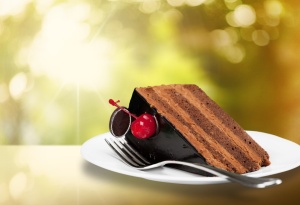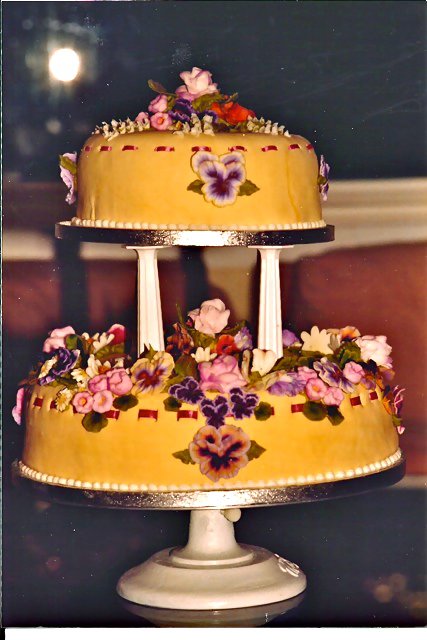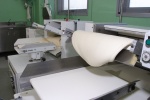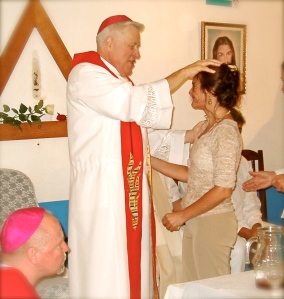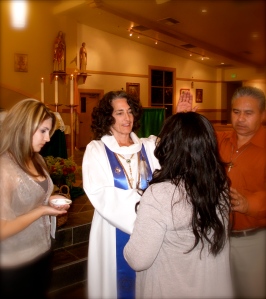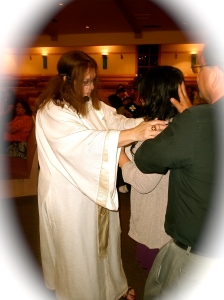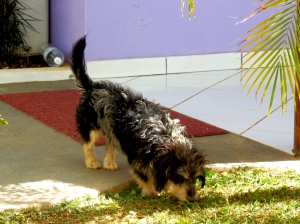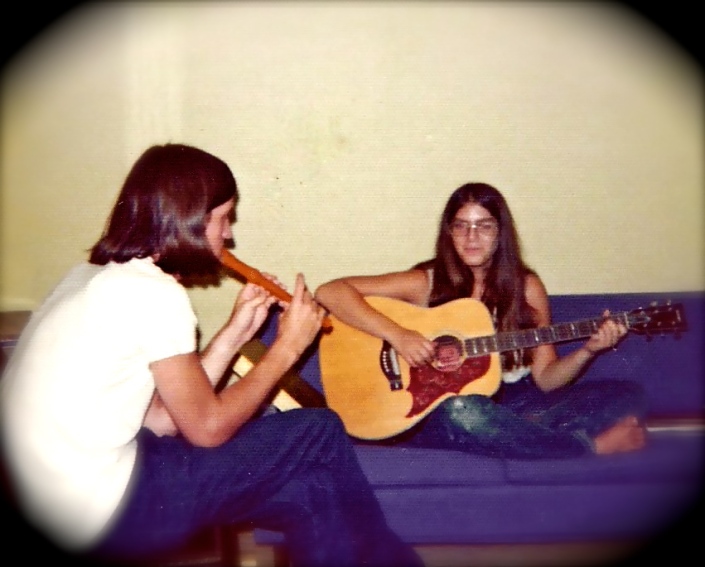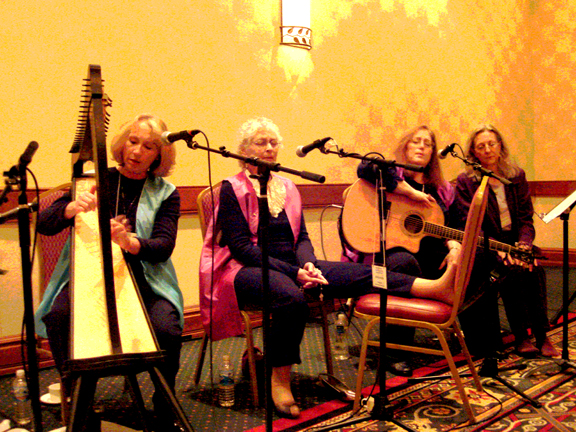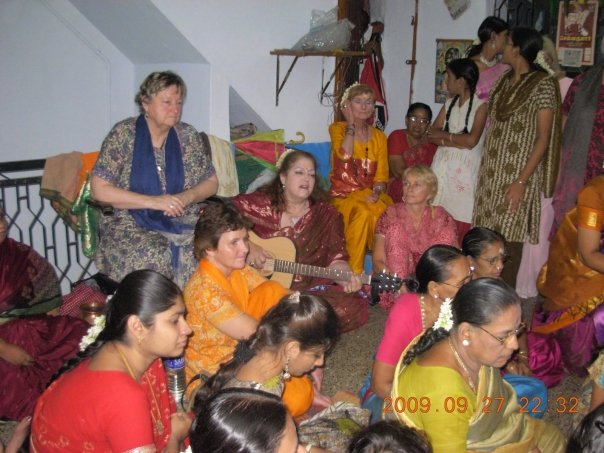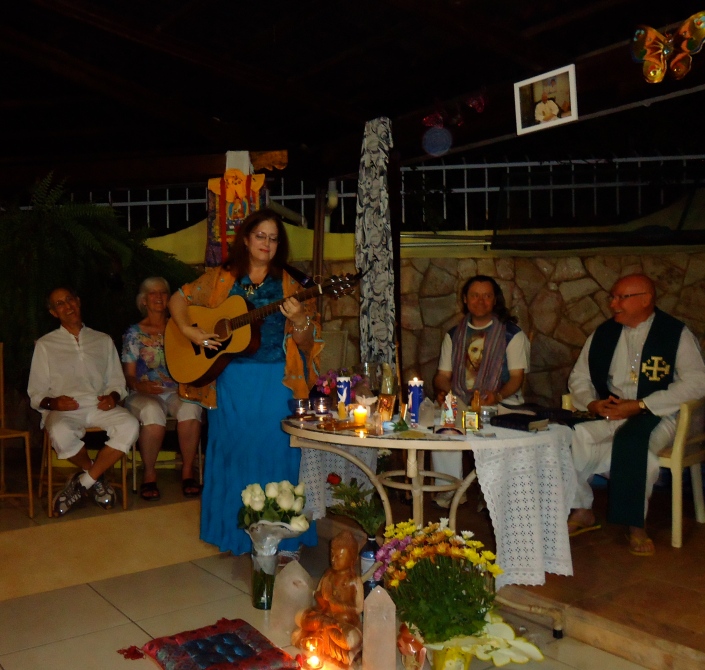Why Healing is Accelerated in a Group Setting
You can open to the Divine by yourself in a cave, but for most people, it’s far easier to do in the company of others. What kind of company? “Good Company” advise the Great Ones. That is the meaning of the word “Satsang” — a community of truth-seekers.

My mentor, Rev. Dr. Ron Roth, who spent over 40 years conducting healing services with attendance ranging from 10 to 10,000 people at any given event, used to warn the audience: “When I call out your condition, NOW is the time to come forward for healing. Don’t think you’re going to corner me privately later in the hall and get any result.”
He was referring to the fact that in the energy of the group prayer and devotion, the healing presence of the Holy Spirit and the holy spirit helpers were called forth in that elevated energy (vibration is another way of saying it) and performed the healing work in a way that usually was astonishing and miraculous. “When Kathryn Kuhlman led services,” he would exhort over and over, “she would stand and sing with the choir and the audience for over an hour before she began the healing portion.”
Why did she do this? Why did Ron insist on long intervals of musical prayer? Indeed, I learned the role of music in healing by serving as one of Ron’s musical team for almost 10 years. I experienced firsthand how music and chanting elevate the vibrational field. All cultures and traditions everywhere recognize this, and there are virtually no healing traditions that don’t include some sort of meditative sounding, whether it is drumming, om-ing, singing, chanting, gongs, kirtan or any other form of music.

Yogananda once held a service in which he had the jam-packed crowd at Carnegie Hall chanting “Oh God Beautiful” for an hour and twenty five minutes!:
“For one hour and twenty-five minutes, the thousands of voices of the entire audience chanted…in a divine atmosphere of joyous praise…The next day many men and women testified to the God-perception and the healing of body, mind, and soul that had taken place during the sacred chanting, and numerous requests came in to repeat the song at other services.“* *
Could Yogananda, or other great mystics, bring about healing without a crowd of chanters? Yes. Such Divine Masters vibrate at a level much greater than your average spiritual healer.
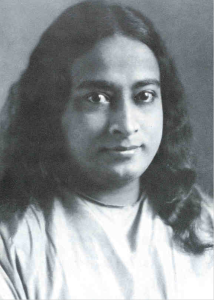
I studied with Mahendra Trivedi for a time, and he joked about experiments in India where they hooked him up to various scientific apparatus and brought in the greatest of Reiki healers, whose effect was absolutely nil. The reason, he chuckled, was “the stronger energy always wins.” His own energetic field was so much higher that nothing she did could affect him in any way. But he himself has transmuted, in scientific experiments, just about every substance known to man, and great healings have also occurred through him. So the fully God-Realized can and do emit a healing energy regardless of the environment.
Yet, many of them; in fact almost all I can think of, did use the group to amplify and generate the field and invite in the Divine Presence. John of God, perhaps the greatest medium and spiritist healer in hundreds of years, has several hundred mediums meditating to generate the field in which the benevolent Encidades (healing entities) do their work through him. At the Casa Dom Inacio in Brazil, this energy field is called the “current”. It comes from the portuguese word corrente, which means both an energetic/electrical current and a chain…it is a healing current formed by a chain of people.”Sit in the current” is the most frequent prescription given at the Casa.
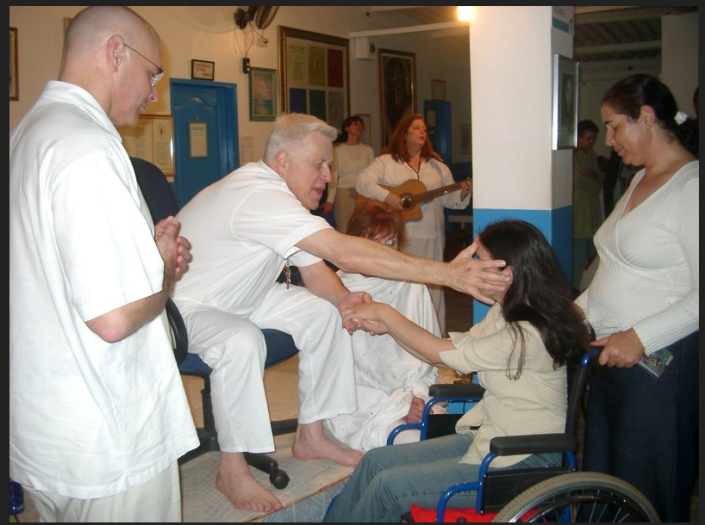
Current is a beautiful example of “give & get.” Some people prefer to have a healer work on them in private. This is effective too, depending on the healer. But one must remember, that’s all about the “getting.” The beauty of healing in and with a group, is that you are also giving. And in terms of your own Grace Bank Account, that can only be a good thing.
Healing services are an opportunity to come together and generate that energetic field in such a way that the whole is greater than the sum of its parts. This is the meaning underlying the famous quote of Jesus: “Where two or more are gathered together, there am I among you.”
Join me at our next free healing event January 10th, 2015 in Evanston, IL: https://revnettie.com/healing-events/
**(source: http://www.yogananda-srf.org/Kirtan_Chanting.aspx#.VKhbZidwsRI)
What Can I Expect at a Healing Service?
 Two groups of people can typically be expected to come to a healing service:
Two groups of people can typically be expected to come to a healing service:
 1) Those in physical or emotional pain, sometimes with very serious illnesses and even desperate for anything that might help, and
1) Those in physical or emotional pain, sometimes with very serious illnesses and even desperate for anything that might help, and
 2) Spiritual “seekers”, or those who are drawn to spiritually-charged environments where they experience Divine Presence, whether they are immediately concerned with healing a particular condition or not.
2) Spiritual “seekers”, or those who are drawn to spiritually-charged environments where they experience Divine Presence, whether they are immediately concerned with healing a particular condition or not.
But really, do you know anyone whose life doesn’t “hurt” in some way? It may not be a physical need at all; sometimes it’s just an intense spiritual longing; longing to be free, to feel whole, to know God, by whatever name or form you recognize.
Whatever brings you into the room, there is one big question on the mind of most people who come to a healing service, event or retreat: “Will I get a miracle healing of my situation?”
This question comes with a whole lot of little questions dangling off of it. Questions such as: “I don’t know if I even believe in this—why am I here?” or
“Everyone else will get something, but probably not me, right?” or
“Why does this one get healed and so many others don’t? Why does someone experience instantaneous relief, and for others it may be a long process, and for some …’they died anyway.'”
Here’s what I want to say right at the get-go: I have no idea who will or won’t get healed, what level of healing they may experience, what is energetically initiated for them, and how it may play out in an individual’s life in terms of time. Unfortunately, “knowing” did not come with the job description. 🙂
I wish I did know.
Every one who dares to be identified as a “healer” of any level of ability—whether being a healer constitutes a mommy-kiss on the bruised knee, being a medical doctor or even a John of God—all healers must ask themselves the same thing: why do some “boo-boos” heal and some don’t? The truth is, we don’t really know why two situations that look very similar end up with different results, although it can be pretty enticing to make up fascinating reasons, which may or may not have merit, and there are some great books on the subject. We just surrender to Divine Will.
But I do know a few things.
I know that great miracles of healing do indeed exist, and I’ve witnessed them and been a part of them; the long slow ones and the “miraculous” instantaneous ones. When it comes to the great healers, I’ve been with some of the Best in the World; those who heal publicly, and those who heal silently from a distance.
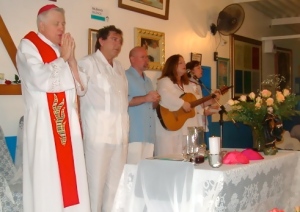
I know enough to know that with all that I do know, I don’t know much. (Say that one five times fast.)
Here’s what else I know: healing, by whatever means it happens, is a function of Divine Grace, not of the person through whom it comes. Grace means, hey, you may or may not deserve it, but here’s a gift from the Divine.
If you don’t get the gift you were hoping & praying for, then sometimes the gift is accepting that you’ve got some learning from the situation you’ve got.
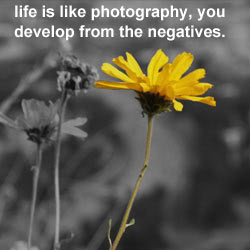 I’ve been with enough spiritually amazing people who have died of cancer or had other disagreeable endings (at least from our physical point of view.) All have said to me or to others: “I would not trade what I’ve learned from this experience for anything.” That doesn’t stop me or them from desiring or praying for a different ending. Listen, surrender is difficult, and every time you think you’ve mastered it in one area, up pops the opportunity in yet another.
I’ve been with enough spiritually amazing people who have died of cancer or had other disagreeable endings (at least from our physical point of view.) All have said to me or to others: “I would not trade what I’ve learned from this experience for anything.” That doesn’t stop me or them from desiring or praying for a different ending. Listen, surrender is difficult, and every time you think you’ve mastered it in one area, up pops the opportunity in yet another.
Surrender is like an ongoing game of Spiritual Whack-a-Mole.

Here’s another thing I know: healing comes from the word for “whole”. Healing is, much as WE DO NOT WANT TO HEAR THIS, not really ultimately about making our arthritis go away or our cancer disappear—although, I’ll take all the physical healing I can get or give. God knows I’ve chased that kind of healing literally to the “ends of the earth” for myself and many others. I’m as agog as anyone else each and every time I hear of or witness a miraculous physical or emotional healing. It’s what I live for.
But that’s not truly Wholeness, is it? Because—brace yourself for this news—in this game of Life, nobody gets out alive. So healed today, gone tomorrow is still the unfortunate truth.
Then, wholeness means something else; healing means something else, beyond just bodily or emotional healing.
Healing is about one thing only: healing that sense of being separate from your Divine origins; call it “separated from God, or Spirit or the Self.
When we recognize someone as “enlightened” or “awakened”, we are recognizing that they have healed that breech at the soul level. What happens then to the body is immaterial (pun intended). That is one reason why Ramana Maharshi, the great Indian saint of the last century, cared little when his devotees begged him to heal himself of the cancer that took him out; why I believe that Ron Roth spent two years in a wheelchair before finally exiting, and there are many other stories like this.
So what can you expect at a healing service?

On the pure physical level, the formats differ from healer to healer. In the legacy I’m a part of, there will definitely be a good deal of music and chanting to bring everyone into a sense of unity, community and raised vibrations. As Ron Roth used to teach us, all spiritual traditions start with raising the vibrations through chant, drum, music. There are some talks that are divinely guided in that they are usually inspired in a way that someone in the room needs to hear. And then there are some organized hands-on healing prayers, where you may be lightly touched on the head.
In our Dec 13th Service in Evanston, IL, Rev. Wendy Chojnowski and I will be working together. We’ve had that opportunity before in one way or another, and it’s always full of delightful spiritual surprises and amplified energy. Our styles are different, but we are sourced from the Same Place.
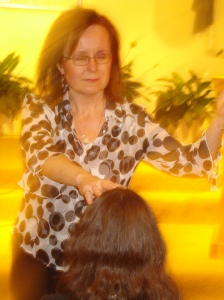
In some way, we who function as the conduits open up to let a more powerful energy of Grace touch your life. That Divine Wisdom knows exactly how much voltage you can handle, what needs to be done, in what order, for the healing of your own life. You can relax, and rest in the fact that a Grace bigger than your small self can be in control, even if you can’t dictate the outcome. 
Sometimes people experience immediate releases of pain or find out within a short period of time that something troubling them in their life miraculously clears up. Some people notice incremental changes. And others walk away feeling “nothing happened.” And maybe in the moment, it didn’t in a way they wanted. From where I stand, something always happens when you open yourself to greater blessing energy. Maybe, five years later, they turn around and realize that some profound changes in their lives were initiated by someone’s Grace-filled touch at a particularly crucial moment.
What can you expect at a healing service? Expect the good. Expect a better, higher connection with God; another name for Good. Expect to open to more goodness and love in your life. Be willing. Be open. Open yourself to possibilities that you only dare to hope for. Ask for what you need. Ask to be Whole. And then, be grateful. More on that another time.
More on that another time.
Join us in Evanston, IL on Dec. 13th for our Free Healing Service: Grace, Power & Miracles… from 4 pm to 6:30 pm at Unity on the North Shore
Details here: https://revnettie.com/healing-events/
Sign up here: http://www.meetup.com/Evanston-Free-Spiritual-Healing-Service-Event/
Download flyer: Dec13FlyerFInal3


